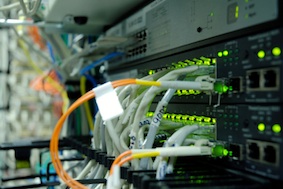

Computronics Status Line Message Software |
Status Line Message allows you to send messages to the 25th line of your terminals (or PC's running terminal emulation software). You can control the characters that are generated for the various types of terminals. In addition, it is possible to configure this software to send the message to a known spot on the screen, if you have terminals without a status line. This can minimize the corruption of your user's screens.
This software can be invoked using the smsg command. You can also invoke this routine using shell scripts or via other programs, if you wish to generate messages programatically.
Please note: Status Line Message requires some subroutines that are a part of Computronics' PEEKŪ software. You must have the PEEK software installed on your system to utilize Status Line Message.
Pricing: Status Line Message sells for US$200 for a single system. This is in addition to the price of the appropriate PEEK license for your size system.
Using the smsg command:
To send a message to a specific user where the pid is known, type "smsg pid". Type "smsg -all" or simply "smsg -a" to send a message to all logged in users.
You can also send a message to a specific user id, and you can
use a wildcard if desired. The smsg command will identify the
pid numbers of the users to notify. In this form, specify
"smsg
The smsg command will prompt for the message to send (up to 78 characters). This message will be placed on the status line, or other terminal line, based on the terminal type and the terminfo entries that have been set up.
Software Installation Notes:
Status Line Message needs to know the terminal type for any user that it will be sending a message to. You set up a file called "/etc/term_types" to store this information. This file must contains the names of your terminal types, one for each connection to the system.
Entries in this file are in two columns. The left column is the device name of the user, while the right column is the appropriate terminal type. You can use wildcards for the device name. Note also that the full device name, as displayed by the "tty" command, needs to be used. This includes a prefix of /dev. There should be one definition for each potential terminal user on your system. This definition can be a wildcard, and the terminal type can be unknown. If all users are on the same type of terminal, a single line will suffice.
If you use multiple terminal types and your users are telnet connected, and thus the port name changes, contact Computronics for advice on possible workarounds.
For more details on Status Line Message and PEEK, contact
Computronics
4N165 Wood Dale Road
Addison, Illinois 60101 USA
Phone: 630/941-7767
Fax: 630/941-7714
Email: info@computronics.com
www: http://www.computronics.com